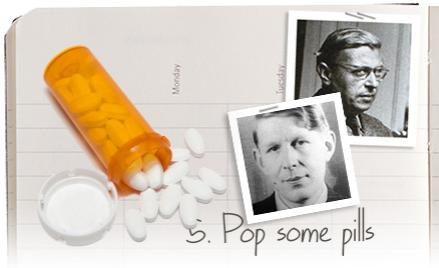By Mason Currey| Slate - Posted Monday, April 22, 2013,

Coffee has such
a beneficial effect on creative activity that it should be no surprise that
many artists have turned to stronger stimulants in search of bigger and more
prolonged boosts. Indeed, amphetamines have their own semidistinguished artistic
heritage, particularly among a swath of 20th-century
writers.
The poet W.H. Auden is probably the most famous example. He took a dose of
Benzedrine (a brand name of amphetamine introduced in the United States in 1933)
each morning the way many people take a daily multivitamin. At night, he used
Seconal or another sedative to get to sleep. He continued this routine—“the
chemical life,” he called it—for 20 years, until the efficacy of the pills
finally wore off. Auden regarded amphetamines as one of the “labor-saving
devices” in the “mental kitchen,” alongside alcohol, coffee, and
tobacco—although he was well aware that “these mechanisms are very crude, liable
to injure the cook, and constantly breaking down.”
Graham Greene had a similarly
pragmatic approach to amphetamines. In 1939, while laboring on what he was
certain would be his greatest novel, The Power and the Glory, Greene decided to also write one
of his “entertainments”—melodramatic thrillers that lacked artistry but that he
knew would make money. He worked on both books simultaneously, devoting his
mornings to the thriller The Confidential Agent and his afternoons to The
Power and the Glory. To keep it up, he took Benzedrine tablets twice daily,
one upon waking and the other at midday. As a result he was able to write 2,000
words in the mornings alone, as opposed to his usual 500. After only six weeks,
The Confidential Agent was completed and on its way to being published.
(The Power and the Glory took four more months.)
No comments:
Post a Comment